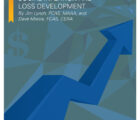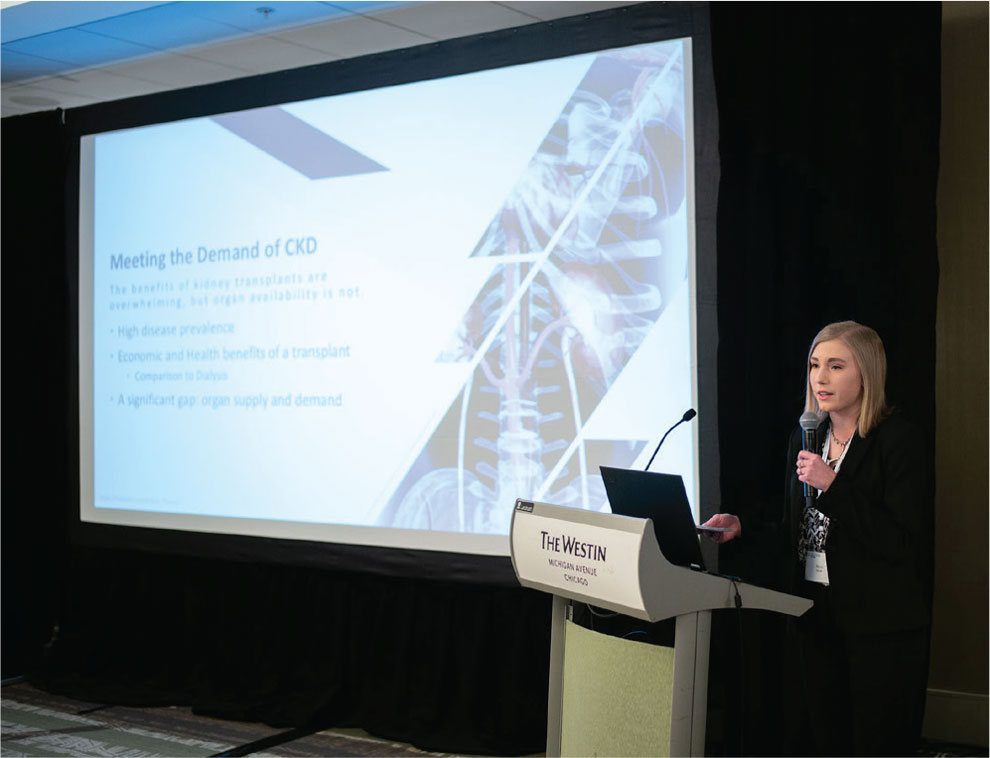The actuarial community has been lauded for its generous volunteer spirit and steadfast commitment to serving those in need. Through The Actuarial Foundation (TAF), one of the profession’s means for giving back, many CAS members have demonstrated their commitment to creating possibilities for underserved teachers and students by volunteering their time and making financial contributions to the Foundation’s innovative math programs.
In 2017, CAS Past President Steve Lowe was so inspired by the work of the Foundation that he challenged CAS members to donate in a special pledge drive called the 100 Donors in December Challenge. Running in 2017, 2018 and 2019, 100 Donors in December resulted in $123,000 in donations and brought over 80 new donors to the Foundation.
This year the CAS is splitting a generous gift of $40,000 to both the Foundation’s Math Motivators Tutoring Program and the Underserved Engagement Initiative of the Modeling the Future Challenge. This donation supports the CAS strategic approach to diversity, equity and inclusion by investing in the community and in organizations that support equitable access to high-quality education as well as breaking down barriers to entry in the actuarial profession, such as inadequate academic preparation and lack of or late awareness of the profession.
CAS members are challenged to create possibilities for underserved students and teachers by supporting The Actuarial Foundation.
Now the CAS is once again challenging its members to raise an additional $10,000 in support of The Actuarial Foundation. You are encouraged to join the CAS Community Counts Challenge by committing time, talent or treasure to these Foundation programs that are making a difference in underserved communities nationwide.
“I am an enthusiastic supporter of the CAS Community Counts Challenge,” said Mike Wacek, FCAS, CERA, MAAA, TAF chair and former CAS Board member. “This is an opportunity for CAS members to contribute to the expansion of two of the Foundation’s signature programs that fill an immediate need for math resources in communities across the country.”
Math Motivators
This volunteer-driven, free math tutoring program pairs underserved middle and high school students with professionals and college students possessing strong mathematics backgrounds. Math Motivators provides weekly in-person and virtual tutoring using a proven 2:1 student-to-tutor ratio for a wide range of math subjects, including algebra, algebra 2, trigonometry, precalculus, AP statistics and AP calculus.
Supporting these students in learning mathematics more widely opens the door to college and career opportunities in STEM fields, including actuarial science.
The program has most recently expanded its reach to upper elementary and middle school classrooms to strengthen foundational math skills. Math Motivators also provides tutoring in both SAT and ACT mathematics. Supporting these students in learning mathematics more widely opens the door to college and career opportunities in STEM fields, including actuarial science.
Modeling the Future Challenge and the Underserved Engagement Initiative
 Another TAF cornerstone program, the Modeling the Future Challenge (MTFC) is an academic competition where high school students learn real-world data analytics, mathematical modeling and actuarial science. In designing the Challenge, TAF and its partner, the Institute of Competition Sciences, wanted students to learn how mathematics applies to cutting-edge industries and technologies so that students gain exposure to highly sought-after careers as actuaries and other math-related professionals. As part of the Challenge, qualifying teams compete nationally for scholarship awards. The MTFC Symposium is the culminating event of the Challenge and brings together the finalist teams, actuaries and other industry leaders for two days of career sessions, problem-solving activities, virtual tours and other unique experiences.
Another TAF cornerstone program, the Modeling the Future Challenge (MTFC) is an academic competition where high school students learn real-world data analytics, mathematical modeling and actuarial science. In designing the Challenge, TAF and its partner, the Institute of Competition Sciences, wanted students to learn how mathematics applies to cutting-edge industries and technologies so that students gain exposure to highly sought-after careers as actuaries and other math-related professionals. As part of the Challenge, qualifying teams compete nationally for scholarship awards. The MTFC Symposium is the culminating event of the Challenge and brings together the finalist teams, actuaries and other industry leaders for two days of career sessions, problem-solving activities, virtual tours and other unique experiences.
The Underserved Engagement Initiative was recently launched with a goal to increase and expand access and inclusion to high school students who are traditionally underserved, often students from racial minorities or low- or middle-income families. Targeting students and educators in Title 1[1] schools, this initiative provides new resources specifically designed for theme with two programmatic components:
- A virtual six-week summer training course hosted by MTFC Master Trainer educators and volunteer actuaries that shows participating educators how to implement the MTFC with students in their math classrooms.
- Virtual fall mentorship from MTFC Master Trainers and volunteer actuaries that help participating educators gain the skills and knowledge needed to be successful in the larger Modeling the Future Challenge.
The Underserved Engagement Initiative’s ultimate goal is to bring more diversity to the actuarial and STEM (science, technology, engineering and math) talent pipelines.
Challenge Accepted
Steve Lowe’s ingenuity, competitive spirit and unwavering dedication started this great tradition four years ago, and The Actuarial Foundation is incredibly grateful for and humbled by the continued support of the CAS and its members. By participating in this year’s Community Counts Challenge, CAS members will help the Foundation bring The Math Motivators Tutoring Program and the Modeling the Future Challenge to more schools and communities where it is most needed.
Writer and consultant Margaret J. Wheatley once said, “There is no greater power for change than a community discovering what it cares about.” To be part of the movement of change to help bring diversity to the actuarial and STEM talent pipelines, join the CAS Community Counts Challenge. Visit www.actuarialfoundation.org/cas-community-counts-challenge/ for more information and to make a difference today.
[1] A provision of the Elementary and Secondary Education Act passed in 1965, Title I (“Title One”) is a program created by the U.S. Department of Education to distribute funding to schools and school districts with a high percentage of students from low-income families, with the intention to create programs that will better serve children who have special needs that without funding could not be properly supported.















